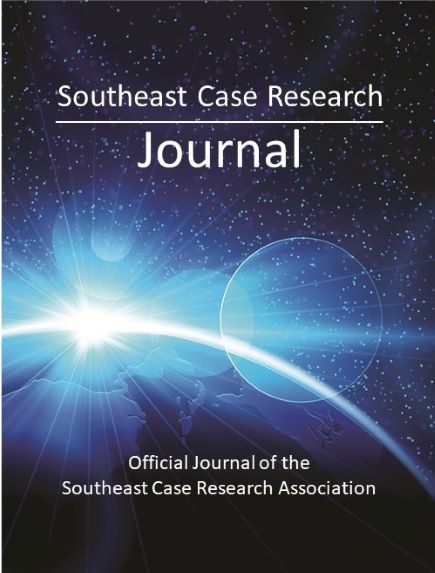Electrolux’s Risky Business: To Relocate or Not?
Keywords:
SECRJ, Southeast Case research Association, competitive advantage, manufacturing, second largest appliance, Electrolux, centralize administration, economies, caseAbstract
Electrolux is a Swedish Company that began by selling vacuum cleaners in 1919 and today it is the second largest appliance manufacturer in the world. The company has expanded through the years via mergers and acquisitions. Attempts to cuts costs, centralize administration, and wring out economies of scale were made in the 1960’s and 1970’s to support continued strategic growth. Major efforts in the late 1990’s were focused on company-wide restructuring in response to increased competition. By 2004, Electrolux had 100 worldwide sites but was experiencing plant closures, high employee turnover, decreased sales, and increases in the cost of raw materials. Electrolux expected the availability of resources to become more contentious, the average age of populations in their historic markets to increase, the trend toward smaller families to continue, and increased technological challenges related to the emergence of the Internet on the horizon.
On the bright side, there is enormous growth potential for the emerging middle classes in India and China and a growing share of disposable household income being devoted to home appliances across the world. Further, opportunities in non-traditional consumer appliances exist with many consumers interested in food and its preparation, kitchen design, and consumer appliance choices are becoming become a way of expressing individual personality. The replacement market is a steady basis for demand and Electrolux is consolidating suppliers and manufacturers by integrating relationships to serve customers at a lower cost.
In this context, Electrolux is following its main global competitors in the appliance sector or “white goods” markets, Whirlpool, GE, LG and Samsung, in moving production from high-cost countries to countries with a lower cost base. By 2003, the Electrolux management team sought to expand into Mexico, with the aim of making its products more accessible to the Mexican, Central and South American markets. Unfortunately, Electrolux finds itself poorly prepared for the transition in creating its own manufacturing capability in Mexico and considers moving back to the United States. Here is a company with a long history of growth through acquisition looking towards internationalization as the key to sustaining its competitive advantage but faces tremendous cultural obstacles and is forced to revisit whether it was truly equipped to take on the challenges of building its own manufacturing capability in Mexico.
Downloads
Published
Issue
Section
License
Copyright (c) 2017 Authors Retain Copyright

This work is licensed under a Creative Commons Attribution-NoDerivatives 4.0 International License.
Authors who publish with this journal agree to the following terms:
- Authors retain copyright and grant the journal right of first publication with the work simultaneously licensed under a Creative Commons Attribution License that allows others to share the work with an acknowledgement of the work's authorship and initial publication in this journal.
- Authors are able to enter into separate, additional contractual arrangements for the non-exclusive distribution of the journal's published version of the work (e.g., post it to an institutional repository or publish it in a book), with an acknowledgement of its initial publication in this journal.
- Authors are permitted and encouraged to post their work online (e.g., in institutional repositories or on their website) prior to and during the submission process, as it can lead to productive exchanges, as well as earlier and greater citation of published work (See The Effect of Open Access).


